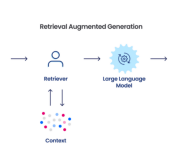Leveraging Digital Solutions for Training and Maintenance
In an era where time is money, the efficiency bar is continuously raised. For small business owners and training managers, this is most poignant when it comes to employee training and machinery maintenance. These crucial aspects can often feel like a never-ending carousel, consuming time, money, and perhaps most importantly, energy.
Digital solutions provide a glimmer of hope, offering pathways that promise to be more efficient than traditional methods. However, making the leap from paper-based or human-centric systems to tech-driven approaches isn’t just about adopting the latest software or gadgetry—it’s about a strategic shift that entails rethinking processes and fostering a culture that embraces the change.
Meeting Ever-Evolving Training Needs
For small businesses, streamlining training can be the difference between thriving and spinning their wheels. Leveraging digital platforms to impart knowledge and skills can transform an employee’s onboarding experience.
Personalized Training
Digital tools allow for personalized training programs, aligning with individual learning needs. An employee’s learning curve can now be tailored. As a result, a Connected Worker gels faster into the work processes and a sense of progression that boosts morale and engagement.
Remote Learning Modules
In an increasingly remote work landscape, digital training tools facilitate learning regardless of location. This translates to less downtime and the ability to leverage experts located elsewhere without incurring travel costs.
Tracking and Evaluation
Where traditional methods often struggle is in their ability to provide robust tracking and evaluation frameworks. Digital platforms can generate real-time data, enabling managers to identify weak spots early and adjust course content dynamically.
Maintenance in the Digital Age
The maintenance of machinery is another critical focal point for small businesses that run like clockwork. A glitch in the system can lead to downtime that isn’t just costly but can have cascading effects on orders and customer satisfaction.
Predictive Maintenance Technology
Digital sensors and big data analytics now enable predictive maintenance. This means machinery signals potential issues long before they become catastrophic, allowing for scheduled, non-disruptive maintenance that keeps operations smooth.
Interactive Digital Manuals
Gone are the days of sifting through paper manuals. Interactive digital manuals can guide maintenance personnel step by step, often with visual aids, making complex procedures more straightforward and less prone to error.
Remote Servicing
In cases where manufacturers need to be involved, remote servicing via digital platforms can save both time and money, with experts guiding on-site personnel through diagnostics and repairs.
Fostering a Digital Transition
The convenience and efficiency of digital solutions doesn’t just happen by implementing new software; it requires proactive steps to ensure a smooth transition.
Change Management
Employee buy-in is key, and it often starts at the top. Managers need to champion the benefits of digitalization, showing a commitment to the learning process and its long-term impact on the business.
Transparent Communication
Open lines of communication are vital, ensuring that all staff understand the ‘why’ and ‘how’ behind the digital changes. Transparency can quell fears and uncertainty, encouraging staff to see the transition as a positive step.
Continuous Improvement
A digital transition is not a one-time event but a continuous process of adaptation and improvement. Businesses should be open to feedback and be willing to make adjustments to their digital ecosystem to ensure it serves the company’s needs effectively.
Conclusion
The use of digital solutions for training and maintenance in small businesses goes beyond operational ease—it’s an investment in the company’s human and technological capital. By making processes more efficient, businesses can save time, reduce costs, and increase employee and customer satisfaction. The path to a digital-first approach may seem daunting, but the potential for growth and success is too compelling to ignore.






























Leave a Reply